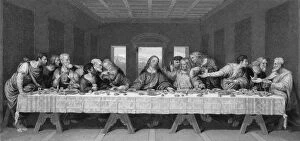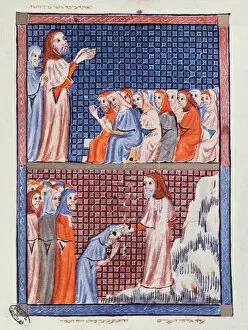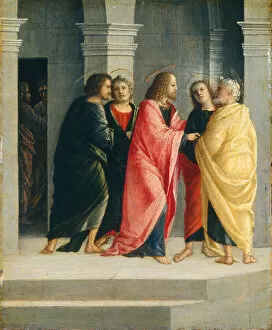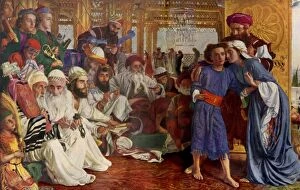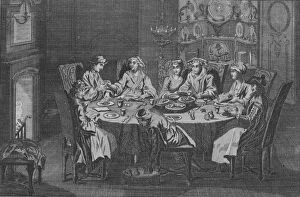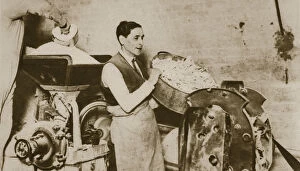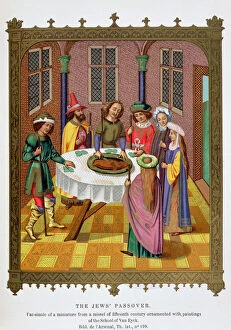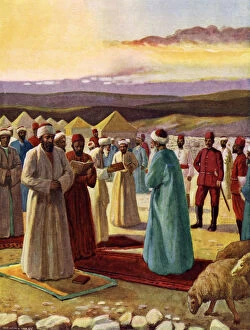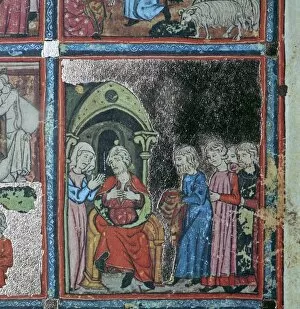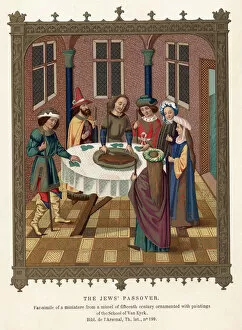Haggada Collection
The Haggadah, a sacred text in Judaism, holds great historical and cultural significance
For sale as Licensed Images
Choose your image, Select your licence and Download the media
The Haggadah, a sacred text in Judaism, holds great historical and cultural significance. Dating back to the 12th-13th century, it contains various illustrations depicting biblical stories and rituals. One such illustration portrays Jesus' last supper where he prophesied his betrayal saying, "one of you that eateth with me shall betray me. " This mid-19th-century creation on vellum captures this poignant moment. Another page from a Haggadah showcases a caricature of English Jews from the same time period. These caricatures provide insight into societal perceptions during that era. Moving forward in time, we come across the vellum pages of the Sarajevo Haggadah illustrating scenes from Moses' life. These intricate drawings bring to life significant events like the parting of the Red Sea and Moses receiving the Ten Commandments. Johann Sadeler I's artwork depicts preparations for Passover in two separate pieces dated around 1585. The attention to detail highlights how important this holiday was and still is within Jewish communities. In another piece titled "Christ Instructing Peter and John to Prepare for Passover, " created in 1504, we witness an artistic representation of Jesus instructing his disciples before their final meal together. A German plaque dating back to approximately 1200 bears markings representing the letter Tau used during Passover ceremonies. This artifact provides valuable insights into ancient Jewish traditions. The Erna Michael Haggada from Germany dates back to 1400 and is now housed at The Israel Museum in Jerusalem. Its preservation allows us to delve into medieval Jewish culture through its beautiful illustrations. "The Finding of the Savior in the Temple" painting from 1854-1855 displays a scene involving Jesus as a child engaging with religious practices outlined by Jewish customs found within haggadot texts. Lastly, an image capturing Portuguese Jews celebrating Passover around c1730s reminds us of the global reach and diverse traditions within Judaism.

